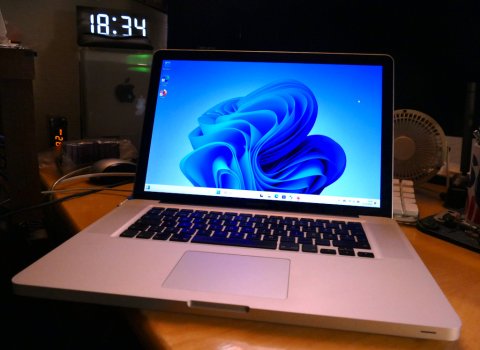Recently got my applications in for a writing program I tried to get into last year, and a potential professional development grant to fund me going there. All told, the grant application took me several weeks of intensive work including revisions and contacting references to get it all together. Fingers crossed...
I've talked about this for a while, but after a good couple of weeks of shakedown trials I think it's safe to say that the 2013 base model 21.5" iMac 14,1 that I upgraded/repaired is fully up and running.
It's not much compared to the uber iMac that B S Magnet is creating, but it's a quantum leap over the 2009 A1181 I was using as my desktop daily driver before I got this iMac, and a big improvement over how I was using it before, with the stock RAM booted off of my external SSD.
I'm usually the kind of person who loves to DIY everything, but for me the real clincher was iFixit's iMac repair kit which included a 1 GB Crucial MX500, the adhesive strips, the pizza cutter tool, extra plastic card shims, the loveable service wedge, and an external USB 3/SATA enclosure for $180 CAD. I'm sure folks out there could source equivalent parts individually for a better final cost via Amazon sales, eBay hunting and the like, but at the time I priced everything out the kit was actually a bit cheaper. And more convenient; it literally arrived at my door the day after I ordered it. And since I was diving into its glue-laden guts, why not max out the RAM to 16 GB too... (Take that, 2022 M2 MacBook Air!)
When booting this Mac from my external Samsung T7 Shield there was always a slight jankiness to it. Sometimes it would simply just refuse to boot from the Shield, stubbornly insisting on booting from the dying internal 5400 rpm hard drive. When booted from the internal drive, on Startup Disk it wouldn't even detect an OS on it (even though it would still let me select it as a boot disk). It's nice to not have to deal with that additional point of friction.
As per my fear of the replacement adhesive tape failing I added a couple of strips of Gorilla Crystal Clear transparent duct tape along the edges to make sure that the glass stays on even if the strips lose their adhesion. When I finished the repair though, I did make it a point to lay the iMac flat for 24 hours to better ensure a proper setting of the glue. Maybe that was enough to ensure a good long-term seal. We'll see.
I'm not bothered at all by the aesthetics. When doing preliminary testing I used random bits of old grey duct tape to hold the display glass to the rest of the Mac, and I didn't mind them at all, which clued me in that my usually finicky brain wouldn't be bothered by the transparent tape. (Maybe years of working with A1181's that were literally held together with tape and superglue helped me shed my purist tendencies.) And thanks to the machine's copious black bezels, when I'm working late at night and in the evening (which is when I happen to do most of my writing) I hardly ever notice they're there.

With this repair, and the immense amount of work I put into cleaning and upgrading it, this Mac finally feels like it's mine, and an actual machine for doing Real Productive Work, as opposed to something I got from a friend to tinker and toy around with. Even though I'm still on 10.15, I still have access to a contemporary supported web browser, run my supported version of Office without issue, and have tons of games to play through GOG and CrossOver/PortingKit.
It's a testament to the remarkable staying power of old Macs, and the tenacity of the community who collectively help keep them going.


